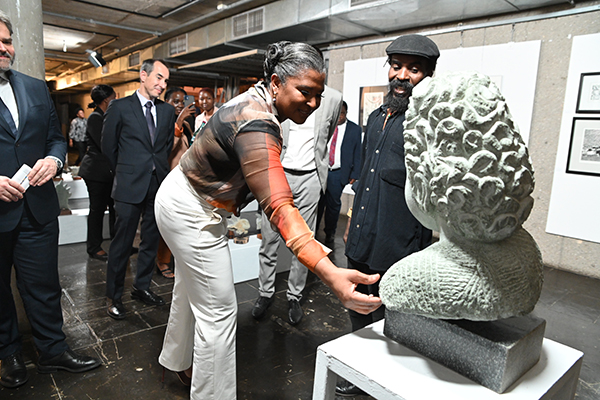Paheja Siririka
Art can be used as a way to deal with unhealed trauma and redefine the fabric of post-conflict societies, First Lady Monica Geingos has said. Officiating at the opening of the ‘Triple III’ exhibition by Namibian sculptor and printmaker Alfeus Mvula at the Franco-Namibian Cultural Centre (FNCC) recently, Geingos acknowledged the remarkable talent of young Namibians and the potential of the industry, emphasising the internationalisation of this often undervalued and underfunded industry.
“Art, as an expression, allows even victims of SGBV (sexual and gender-based violence) to share their experiences in a way that is both informative and healing. This ties in directly to the Art For Activism Show the BreakFree From Violence movement will host this month as part of #16DaysOfActivism,” she said. Mvula concurred with Geingos’ sentiments that there are various ways in which art can be used, and it has proven to be an efficient way to do so therapeutically.
“Art is an element to heal from societal issues. It has helped many people in many ways,” he said, adding with dismay that this crucial industry is neglected, and the status quo needs to change.
Exhibiting more than 50 artworks in the form of sculptures, prints and paintings, Mvula said the Covid-19 period tested him to the core when he stopped using machines and started using his hands. “I was supposed to create artwork of the First Lady but Covid-19 came. Nonetheless, I continued, and this is the outcome. This is work done during tough, trying times of the pandemic. I looked at her style – the way she wears her hair, and tried to put it in this sculptor, which she loves and appreciates,” he said joyfully.
Mvula said he will take Geingos’ advice to use his talent and ensure it becomes internationally recognised. He advised fellow artists to use the abundance and sufficient raw materials in the country to create beautiful, storytelling artwork. The FNCC has been hosting Mvula since 4 November 2022, and today is the last day of the exhibition.


